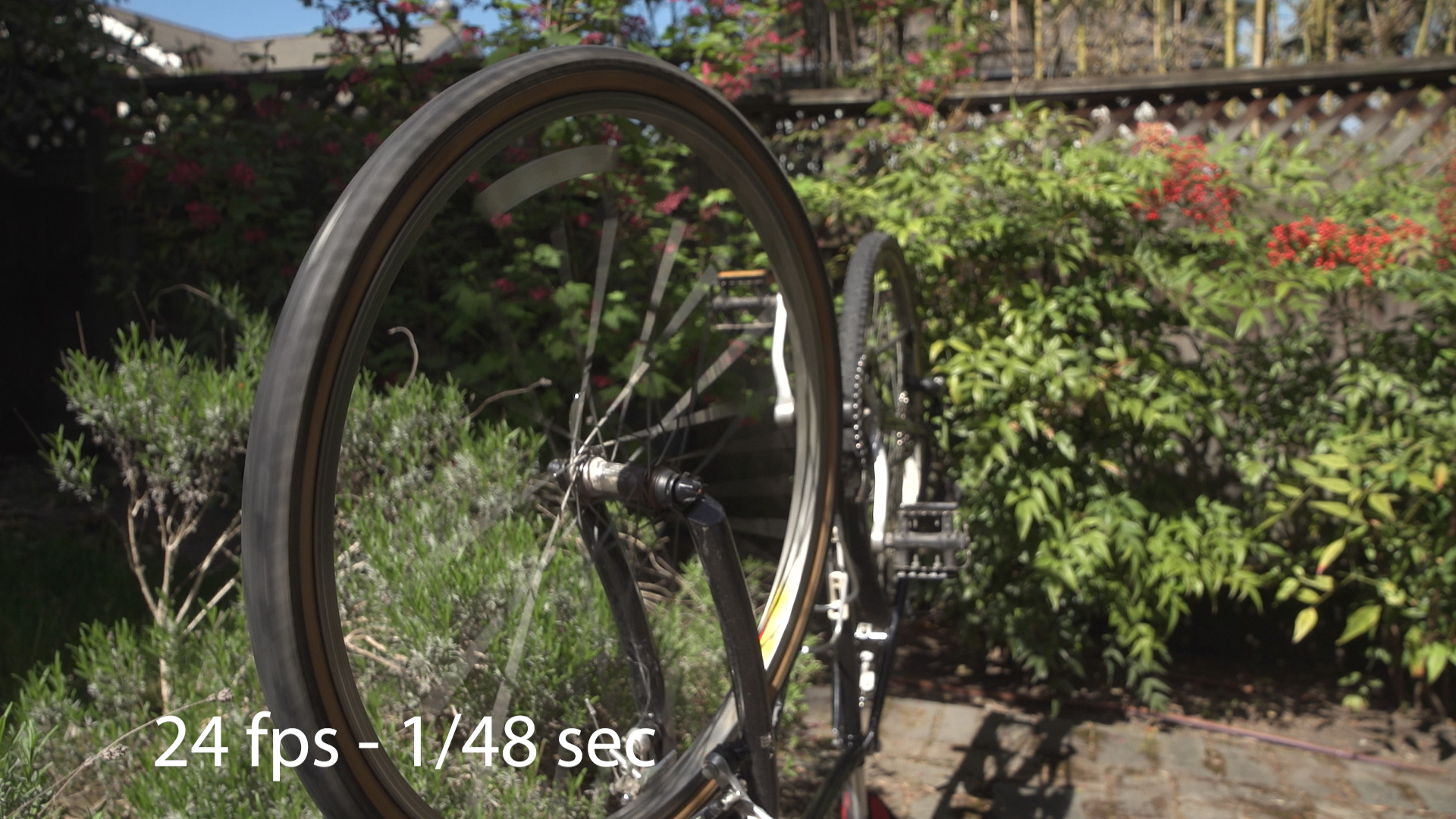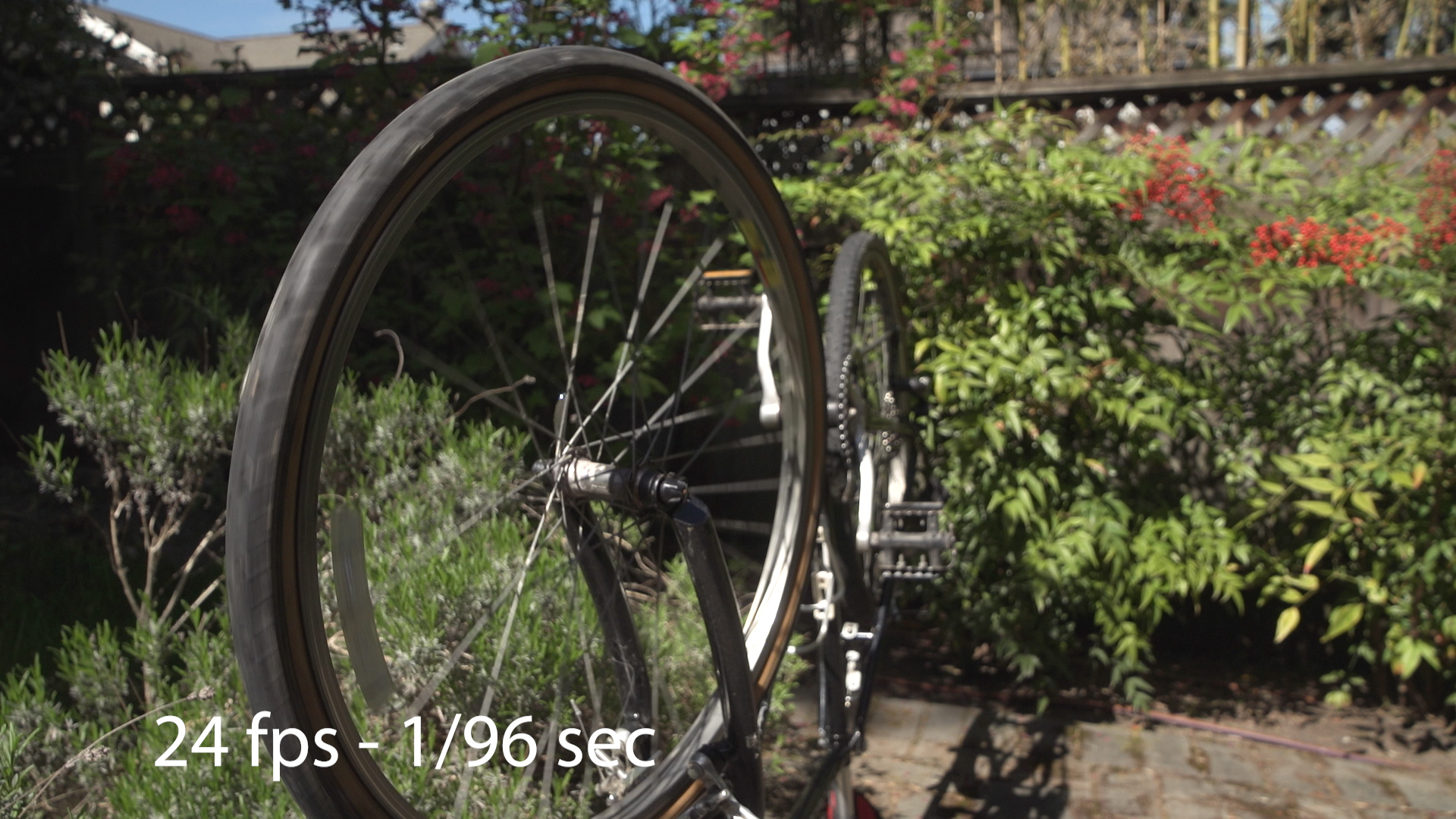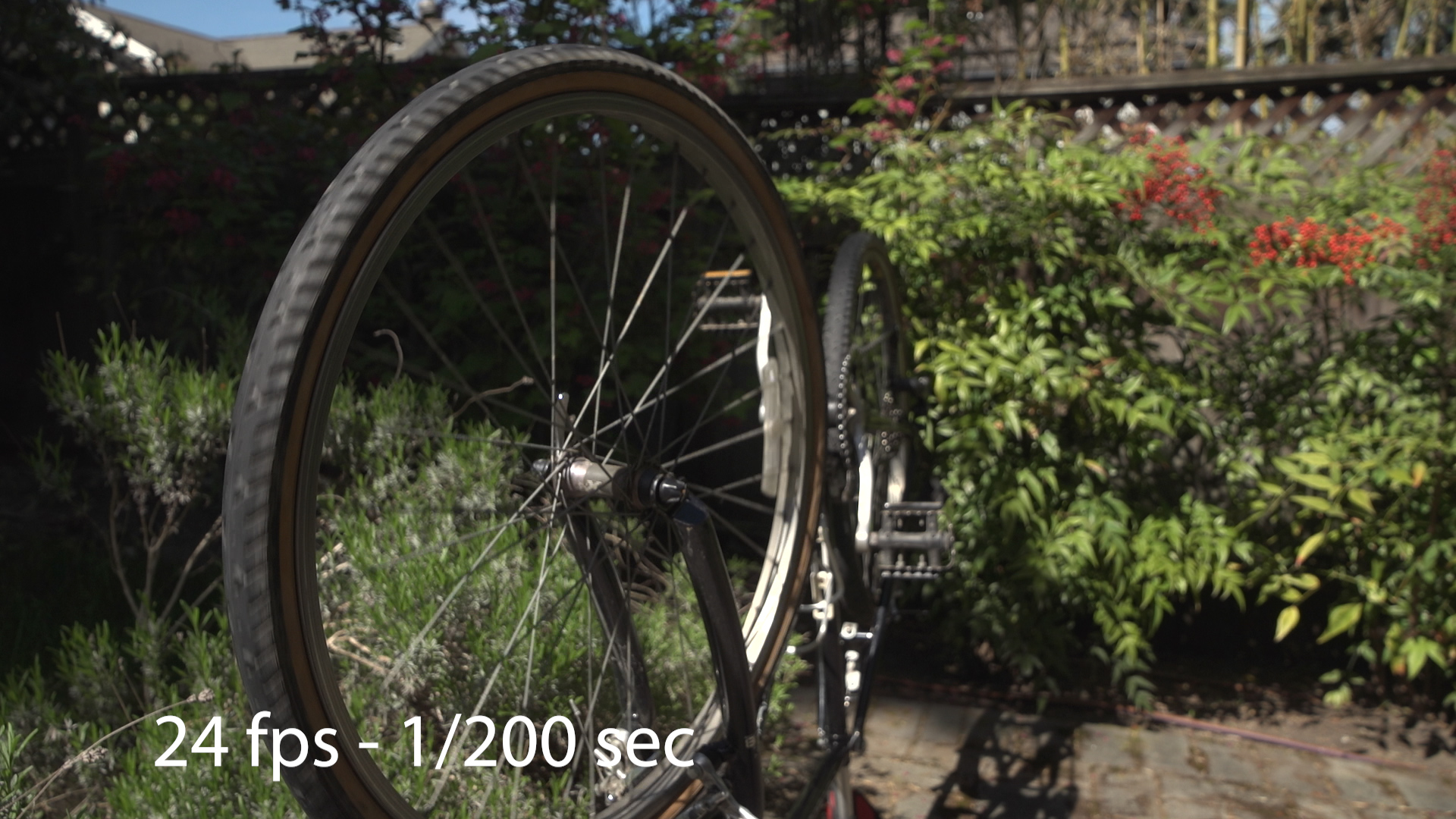
Capturing visually-pleasing video content requires understanding two related but different settings: frame rate and shutter speed. Photographers often confuse the two.
Frame Rate
The frame rate of video content is the number of individual frames shown to the viewer in one second. Something over 10-12 frames per second (fps) to the human eye will appear as motion.
Film content and most movies are captured using 24 fps (23.976 fps, to be precise).
Television content has historically been broadcast at 30 fps (29.970 fps, to be precise) for NTSC televisions in North America and Japan and 25 fps for PAL televisions in Europe.
Newer ATSC broadcast standards for HDTV allow for frame rates of 24 and 30 fps at 1080p resolution and 60 fps at 720p resolution.
Online video sites like YouTube allow for standard frame rates like 24, 25, 30, 48, 50, and 60 fps.
Shutter Speed
When capturing video, shutter speed is the amount of time each individual frame is exposed.
In video, this is typically a fraction of a second, like 1/48 sec or 1/60 sec.
Film motion picture cameras use a rotary disc shutter to achieve their exposure times, with shutter speed indicated as a shutter angle.
For film captured at 24 fps:
- 360° – 1/24 sec
- 180° – 1/48 sec
- 144° – 1/60 sec
- 90° – 1/96 sec
- 72° – 1/120 sec
- 45° – 1/198 sec
Video captured at 24 fps with a shutter angle of 180° (1/48 sec) exposes each frame for half of the time.
Video Motion Blur
In still photography, photographers often aim to freeze motion and provide razor-sharp images. In scenes that contain movement, this is achieved with high shutter speeds, anywhere from 1/250 sec – 1/8000 sec.
Video is different. Using high shutter speeds with video content does freeze motion on each frame, resulting in very crisp individual images. However, when played back at standard video frame rates, the action can appear hyper-realistic and give the viewer a jittery, unsettled feeling.
The most visually-pleasing video content has some motion blur in each frame, giving a smoother, more cinematic look to the footage. See the video above for examples of motion blur at varying shutter speeds.
The following frames show how the motion of a spinning bicycle wheel is blurred at varying shutter speeds.



The 180° Shutter Rule
The film industry has a rule of thumb often used to achieve natural-looking motion blur in video content called the 180° Shutter Rule.
The 180° Shutter Rule states that your shutter speed should be set to 1/frame rate x 2. So at a frame rate of 24 fps, the correct shutter speed is 1/48 sec. For 30 fps, a 180° shutter would be 1/60 sec.
Since digital still and video cameras do not use a rotary shutter, some shutter speeds may not be available. You can use the closest shutter speed to achieve the usual motion blur in your footage.
For example, if your DSLR does not have a 1/48 sec shutter speed, 1/50 sec would be the closest choice for 24 fps footage. For 30 fps footage, choose a 1/60 sec shutter speed.
Cinematic Look
Because audiences are conditioned by viewing decades of movie content, they anticipate video content with a cinematic look. This is 24 fps with 1/48 sec shutter speeds to achieve the “typical” motion blur.
Older TV content has often been shot at higher shutter speeds, giving a distinct “video camera feel” to the footage.
Creative Use of Video Shutter Speed
The 180° Shutter Rule is simply a rule of thumb to achieve normal-looking motion blur in video content.
Faster shutter speeds can be used for dramatic effects. For example, the D-Day sequence in Saving Private Ryan was shot at a 45° shutter (1/198 sec) to highlight the explosions’ jerky motion and extreme detail.
In contrast, slower shutter speeds can create blurry, dream-like sequences.
Faster shutter speeds can also be essential when filming fast-action sports or fast-moving wildlife. The 180° Shutter Rule speeds will introduce too much blur in fast-action sequences. Using a faster shutter speed, like 1/120 sec or faster, can help with fast-moving action depending on the speed of motion in a particular scene.
When your scene involves dramatic camera moves like panning or tilting, be aware of shutter speeds and increase them if necessary. For example, a moderately fast camera pan from left to right at 24 fps and 1/48 sec may look too jerky or blurred. Increasing the shutter speed can help in this situation.
Neutral Density Filters for Video
In still photography, neutral density filters slow shutter speeds for creative effects like creating motion blur in water or clouds.
In videography, neutral density filters are a far more critical tool to maintain the desired aperture and shutter speed in brightly-lit scenes.
Cinematographers often want to choose an aperture and depth of field for a particular scene. For a shallow depth-of-field, this means shooting with the lens wide open at f/4 or f/2.8, allowing lots of light to reach the sensor.
For brightly-lit scenes, particularly outdoors, after lowering ISO sensitivity to its lowest setting, the only way to achieve proper exposure would be to make the shutter speed faster. But if the shutter speed is too fast, the resulting video will have an unnatural-looking motion blur or lack thereof.
By adding a neutral density filter to the lens, the camera operator reduces the light reaching the sensor and can lower the shutter speed to achieve the desired amount of motion blur.
Frame Rate Recommendations
Photographers who are new to video may assume that if they want the highest-quality video, they should shoot at the maximum frame rate that their camera supports. This is not the case.
In most scenarios, the frame rate you deliver will be dictated by the delivery platform for your content. A feature film will be 24 fps, while broadcast TV will likely be 30 fps.
Most video content is delivered to viewers using either 24 fps or 30 fps. In my shooting, I target 24 fps for projects that I want to have a cinematic, film-like appearance. For run-and-gun videos, mainly when I am hand-holding the camera or with a fair amount of panning or camera motion, I will typically target 30 fps with its slightly higher frame rate and shutter speed.
What about 60 fps, the other commonly supported frame rate? 60 fps is most often used for slow-motion video. A video is shot at 60 fps and then slowed down on a 24 fps timeline, resulting in a 2.5x slow-motion effect.
Even higher frame rates like 120 fps and 240 fps may be possible on specific video cameras and can be used to slow down footage even more for dramatic effect.
Experiment With Shutter Speeds
The 180° Shutter Rule is a good starting place to set the shutter speed for your video projects and works nicely in many scenes. However, I encourage you to experiment with faster and slower shutter speeds in your video projects to understand how it affects the look and feel of your footage and how it can be changed to achieve creative looks.
